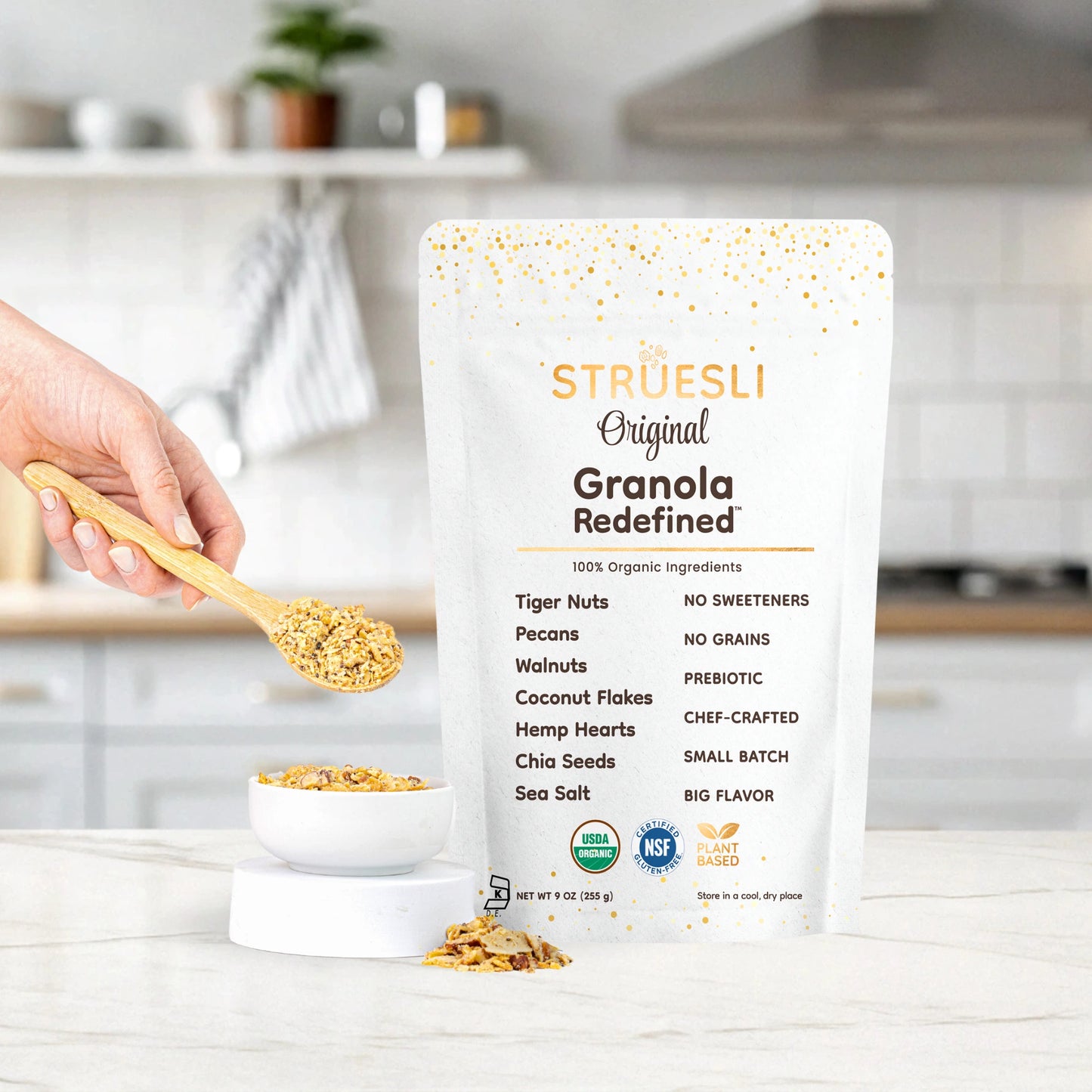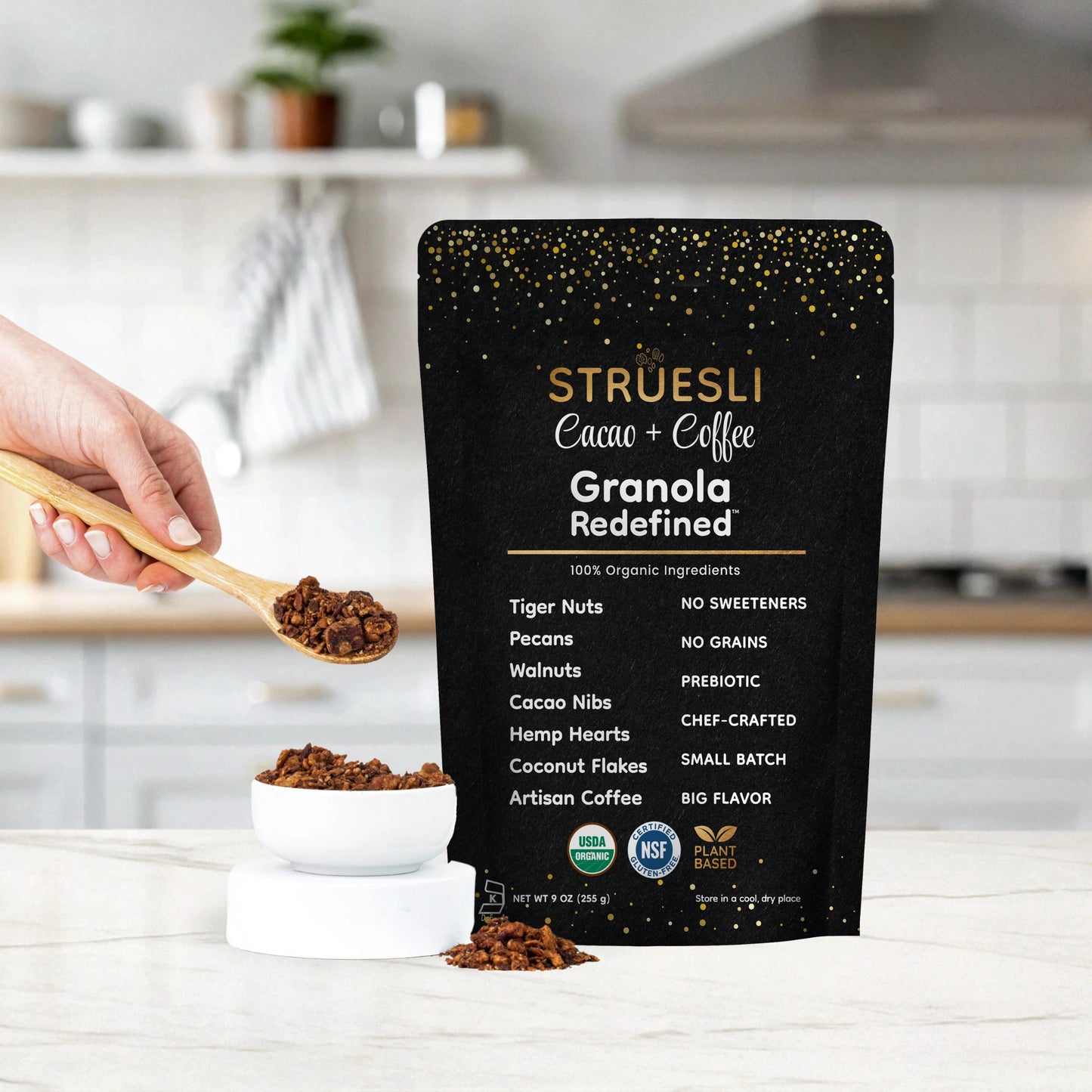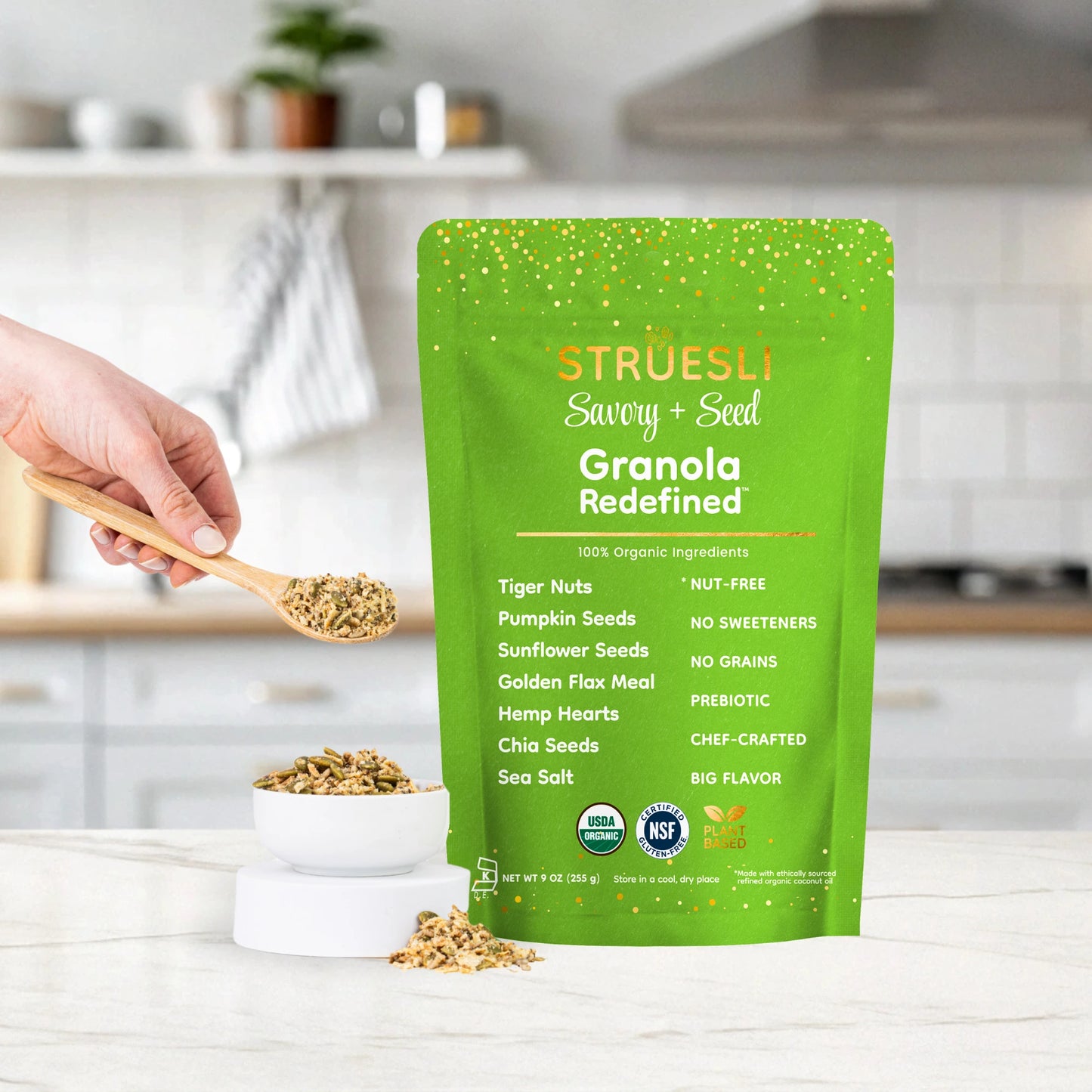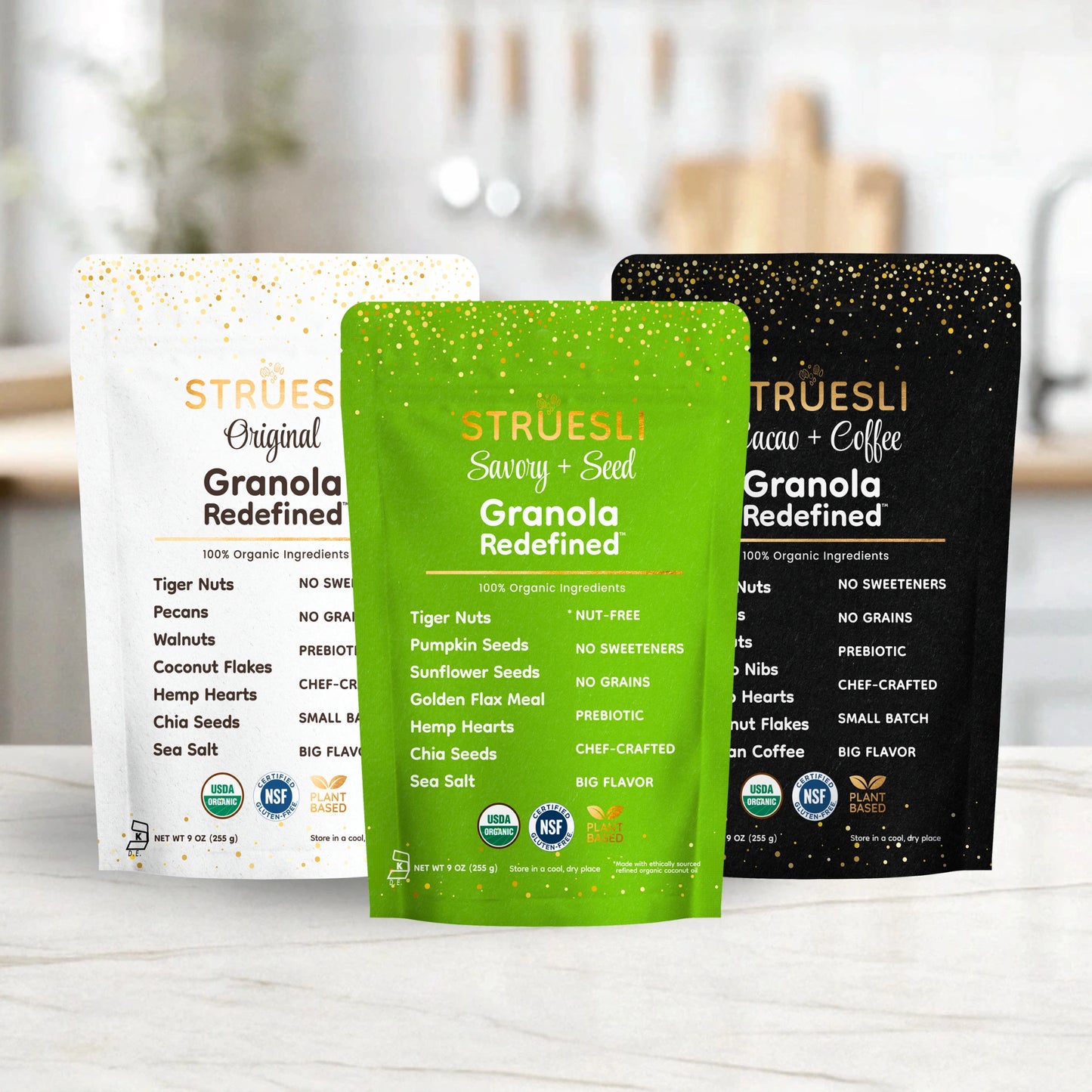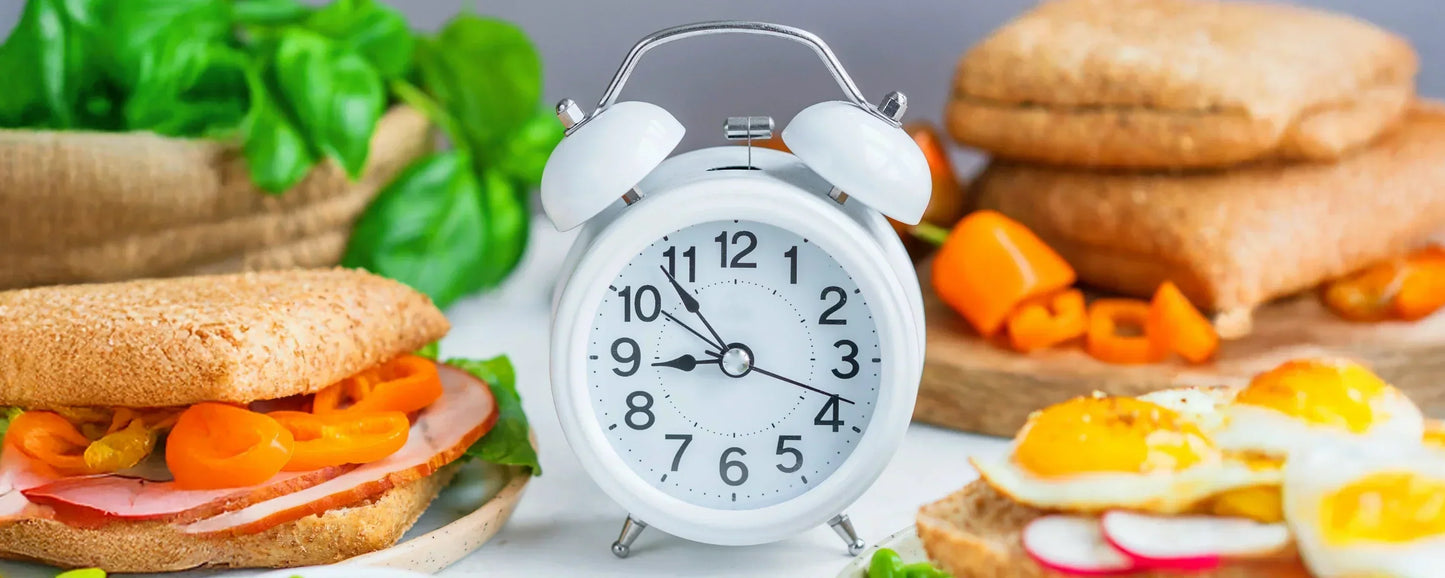
Intermittent fasting is integral to the story of Struesli. Before creating Struesli, founder and personal chef, Adrienne Lukin, had been using intermittent fasting for years. She kept looking for the best foods to eat when breaking her fast. When she couldn't find exactly what she wanted - which was something delicious to top her yogurt that was also low in sugar but provided healthy fats and fiber - then she created it herself. And thus, Struesli was born!
Intermittent fasting isn't new, but researchers and nutritionists continue to learn new techniques and tips to make it a healthy approach. This article provides an update on the science of intermittent fasting and the best choices in foods to break a fast. I'll also share intermittent fasting advice from Adrienne herself.
What Is Intermittent Fasting And How Does It Work?
Intermittent fasting is all about when you eat, rather than what you eat. It is based on the premise that going for prolonged periods without taking in calories has some benefits for your body.
Common Types of Intermittent Fasting
The 16:8 Daily Fast: Research shows that most people say the 16:8 daily approach to fasting is the easiest to stick with long term. It means that you fast for 16 hours of the day and night and then your eating occurs within the remaining 8 hours. For example, you may choose to eat between the hours of 10 a.m. and 6 p.m., and then fast from 6 p.m. until 10 a.m. the next day.
The 5:2 Weekly Fast: Another approach to intermittent fasting is to eat regularly for five days of the week and then to limit your calorie intake to just a single 500-calorie meal for the other two days of the week. Ideally, you would break up the two fasting days so they are not back to back. For example, you could choose Monday and Thursday to be your 500-calorie fasting days while eating regularly on Sunday, Tuesday, Wednesday, Friday, and Saturday.
Other Fasts: People have experimented with other types of fasting hours, such as a 14:10 daily fast, where eating occurs within a 10-hour time frame, or also simply by setting a “cut-off time” (such as 6 p.m.) where no eating occurs after that time until they wake the next day.
“I've been intermittent fasting for almost 5 years,” says Adrienne, Struesli's founder. “I do the 16:8 timing, and I stop eating at around 7 p.m. and start around 11 a.m. I started because I was spinning my wheels with what I was doing as far as eating and exercising while also experiencing premature menopause. I came across Autumn Bates Youtube channel on intermittent fasting and thought, ‘I'll try it for a month.’ I did, and I haven’t stopped since!”
Reasons To Try Intermittent Fasting
There are several reasons someone may want to try intermittent fasting. The most common ones are:
Weight loss: The most common reason people try intermittent fasting is for weight loss. For most (but not all) people, the diet constraints mean you’re taking in fewer overall calories than you were when you had no time restrictions around eating. And over time, fewer calories leads to weight loss. Additionally, your body’s metabolic rate tends to increase when fasting because of something called metabolic switching, where your body switches from using glucose (sugar stores) for energy to burning fat stores for energy.
Blood sugar management: Intermittent fasting has been shown to improve blood sugar numbers and reduce insulin resistance after 8 weeks, which can be highly beneficial for people with prediabetes and type 2 diabetes, though most studies show it is more beneficial for men than women in this regard.
Fighting inflammation: Several studies show that intermittent fasting improves the way and speed at which your body reacts to oxidative stress and therefore helps reduce bodily inflammation. This could be beneficial for someone wanting to ward off an auto-immune disorder and inflammatory conditions, such as cardiovascular disease, rheumatoid arthritis, IBD, Crohn’s disease, as well as better cognitive function.
Spiritual strength: People also fast for religious and spiritual reasons to develop spiritual strength, self mastery, and humility.
Why Struesli's Founder Embraces Intermittent Fasting
“I have more energy and more stable blood sugars, so I never get hangry” says Adrienne. “It also helps with managing my migraines. I feel less bloated and see results from lifting weights and resistance training much quicker. It's also a lifestyle that works for me when I'm home, traveling, and during the holidays. I don't ever feel restricted or have to count calories or measure or weigh food.”
What To Eat While Fasting
The benefits of fasting all stem from the calorie restriction that occurs during the fast. So no foods should be eaten during the fasting period. However, you can drink water and non-calorie beverages, including black coffee, zero-calorie flavored and seltzer waters, and apple cider vinegar.
Can you drink coffee while intermittent fasting?
Yes, black coffee is a common drink consumed when fasting. Not only can it be a comforting, warm beverage during a fast, but it can help prevent caffeine headaches. Some fasting plans also allow for drinking coffee with fats, such as MCT oil, ghee, coconut oil, or butter. Though these choices technically do contain calories, they don’t contain carbohydrates (which break down to glucose) so you’d still be experiencing the metabolic switch. The same is true for bone broth.
The Best Foods To Break Your Fast For Optimal Health
While much of the focus around Intermittent Fasting has been on the fasting periods, new research has found that some food choices are better than others when you “break the fast.”
When you come out of a period of fasting, you may feel ravenous, especially in the first few days of intermittent fasting. But easing into eating again can prevent you from digestive discomfort, such as bloating and constipation, and also have metabolic benefits.
As a rule, a small mixed meal that is low in added sugars and saturated fats, is generally best. Try breaking your fast with:
- A favorite Greek yogurt or cottage cheese topped with Struesli and berries
- Sourdough toast topped with avocado, microgreens, smoked salmon or a cooked egg, and everything bagel seasoning or Struesli on top
- A produce-rich smoothie with nut butter and Struesli blended in
- A quinoa power bowl topped with roasted veggies, avocado, hummus, and Struesli
- A combo snack plate with healthy fats (avocado, olives, Struesli), protein (smoked salmon, turkey sticks, hard-cooked eggs), roasted veggies, cheeses, and crackers
“I start my day with organic French-press coffee,” says Adrienne. “Then I drink water or herbal tea until around 11 a.m. To break my fast, I aim for a mix of protein, fat, and fiber, and love different textures. So a bowl of full-fat Greek yogurt topped with Struesli, berries, and a drizzle of nut butter is my all-time favorite!”
Common Mistakes To Avoid When Breaking Your Fast
Since intermittent fasting requires some lifestyle changes, it can be difficult for some to get into the habit. Here are some common mistakes that people make when breaking their fast:
- Not eating - fasters will sometimes think that they can get even more benefits by limiting food during the eating period. But the opposite is true. It's important to eat nutritious foods during the eating period. Getting fewer calories than your body needs causes weight loss, but too few calories also results in muscle and bone loss. Plus, it's not sustainable for very long.
- Breaking a fast with the wrong foods - fasters might want to eat anything they can get their hands on when coming out of a fast. But it's important to start with a small meal that contains some protein and fiber, and low amounts of sugar and saturated fat in order to avoid digestive distress.
- Not drinking enough water - being hydrated is extremely important for your body's metabolic processes to work correctly. Aim for 64 ounces of water during waking hours, whether those are fasting hours or not.
- Giving up too early - it can take up to 4 weeks for someone to become accustomed to their fasting schedule and for their bodies to adjust to the pattern. And going through a transition period, where you feel cranky and “hangry” is a common part of the process. However, most people cite feeling better once they’ve stuck with intermittent fasting for 4 weeks and learned some techniques and foods that help them achieve their intermittent fasting goals.
Intermittent fasting is an approach that many people have tried. Some find it difficult to maintain the approach with their lifestyle, while others readily embrace the guardrails of fasting and have had great success with it. If you have a medical condition where fasting may be harmful, such as someone who takes insulin or other blood sugar medications or is pregnant or breastfeeding, always consult your healthcare provider before fasting.
Written by Jessie Shafer, RD
Updated August 16, 2025

